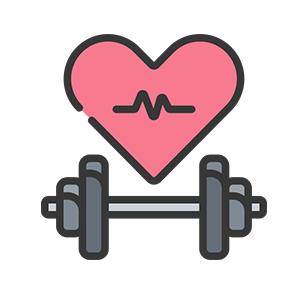As an active person, I know that eating a high-protein diet helps me feel and perform my best.
I started eating a high-protein diet six years ago, which helped me lose 35 pounds and keep it off, partly because it helps you feel full for longer. Initially, tracking my protein and calorie intake helped me understand how much food my body needed and when I was overeating.
But I knew counting calories or macros forever wasn’t sustainable, so I developed a simple formula that’s helped me stay in shape by ensuring I eat enough protein.
Most days, I eat three meals and two snacks: breakfast, lunch, an afternoon snack, dinner, and dessert. Of those five meals, I make sure four provide a good amount of protein and don’t worry about the fifth.
Dietitian Nichola Ludlam-Raine told Business Insider that my approach is both practical and balanced: “It aligns well with the idea of mindful eating without the need for strict tracking or counting.”
Interest in protein has exploded in recent years, as people learned that it can help with losing weight and building muscle, while avoiding fad diets. According to Precedence Research, the global protein market was worth $10.37 billion in 2022 and is forecast to rise to $23.34 billion by 2032. 4 out of 5 protein-rich meals per day A composite image of Rachel flexing in the gym, and on a run. Protein is important for everyone’s health but is particularly beneficial for active people. Rachel Hosie
My “rule” is flexible in practice.
For example, if I’ve had a simple vegetable pasta dish for dinner, I might have a high-protein yogurt rather than some chocolate for dessert. If I know I’m going to have a dessert that’s tasty but lacking in protein, I aim to have a high-protein afternoon snack.
“Ensuring that at least four out of your five meals include protein is a simple but effective strategy,” Ludlam-Raine said.
It’s not a hard and fast rule and I certainly don’t stress if some days fewer meals are high-protein, but generally, it works for me. Some days my protein intake will be higher, some days lower, but it evens out. Related stories
As someone who’s always been interested in nutrition and has tracked my protein intake in the past, I know what foods are a good source of protein. I try to eat meals and snacks containing at least 20 to 30 grams of protein: if I consume four of those most days, I’ll consume a decent amount overall.
Elite nutrition coach Mike Molloy previously told BI that he recommends consuming 0.75 grams of protein per pound of total body mass, or 1.6 grams per kilogram, for optimal health and performance. That means I’m aiming for around 110 grams of protein per day: three 30-gram meals plus one 20-gram snack hit that perfectly. Flexibility means sustainability
Ludlam-Raine said that eating protein throughout the day helps with satiety, muscle maintenance, and overall health.
The 4/5 rule, she said, “allows flexibility and enjoyment, which is essential for maintaining a sustainable and healthy relationship with food.”
It’s important to be adaptable and not to stress about protein intake fluctuating, Ludlam-Raine said.
“Overall, it’s a sensible, relaxed approach that prioritizes protein without making it an overwhelming focus, which is something I often recommend to my clients,” she said.

